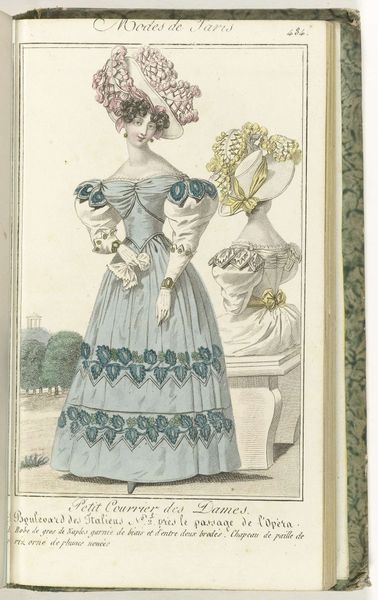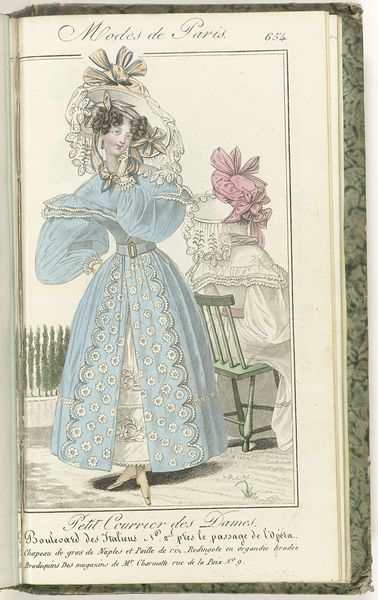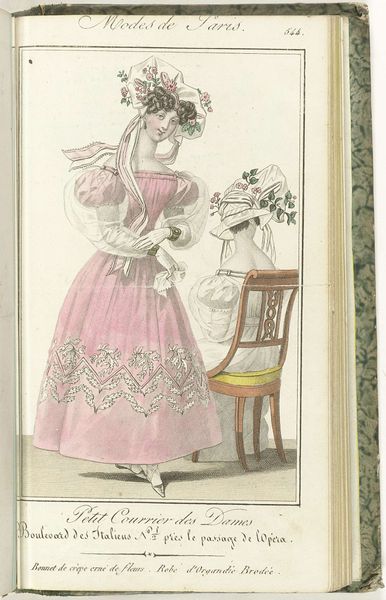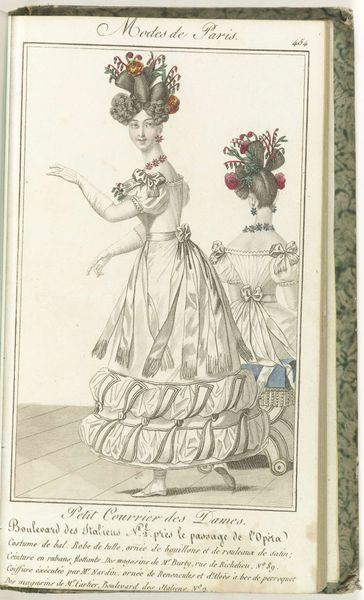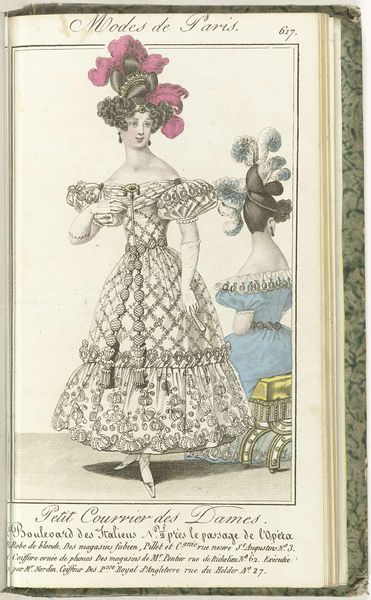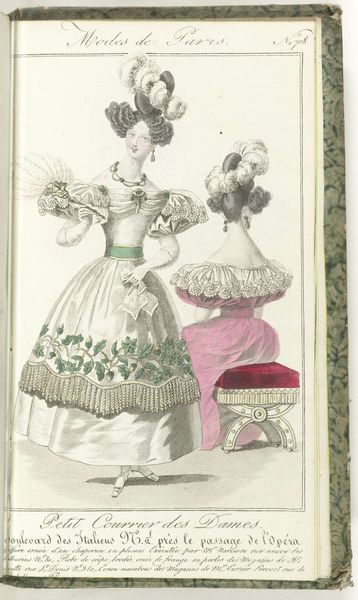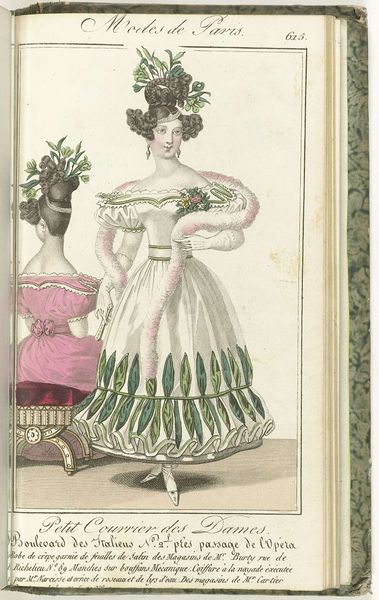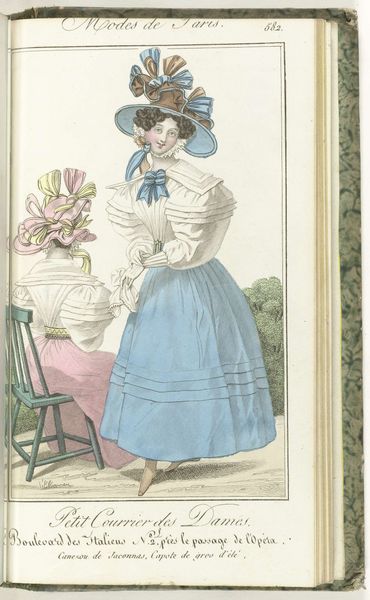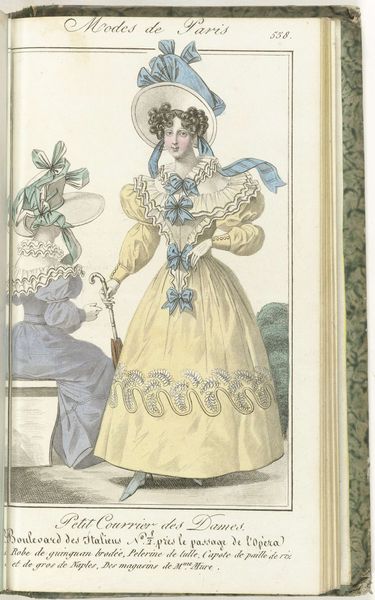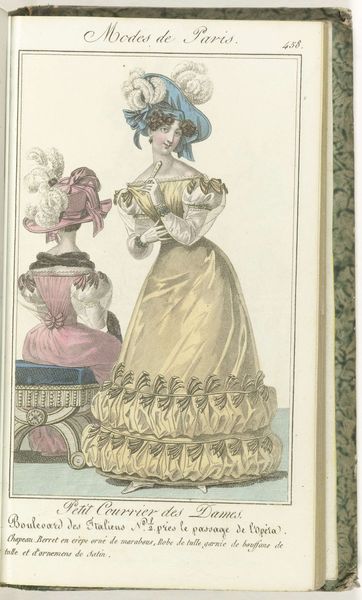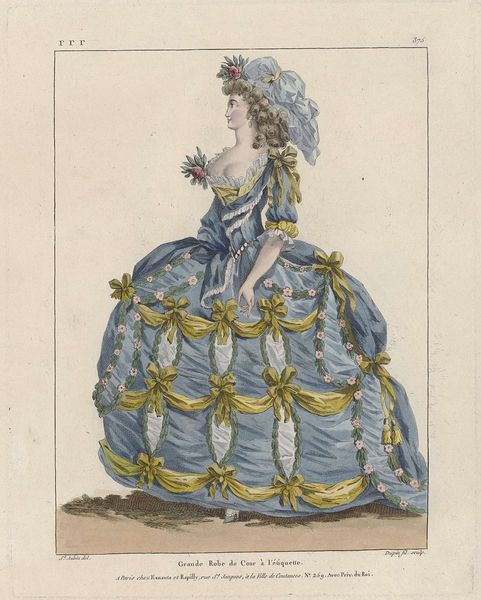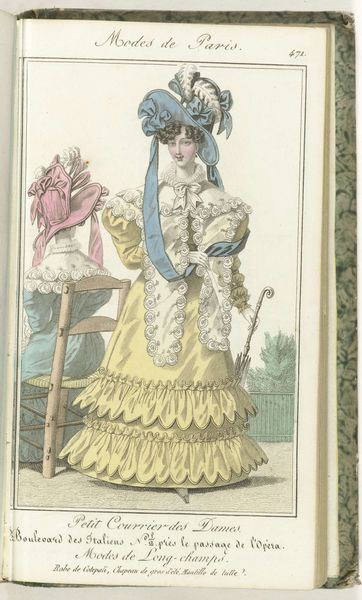
graphic-art, mixed-media, tempera, print
#
portrait
#
graphic-art
#
mixed-media
#
16_19th-century
#
tempera
# print
#
figuration
#
romanticism
#
watercolour illustration
#
decorative-art
Dimensions: height 201 mm, width 113 mm
Copyright: Rijks Museum: Open Domain
Curator: Here we have "Petit Courrier des Dames, 1828, No. 588: Chapeau de crêpe..." It's an engraving touched with tempera and other media, housed right here at the Rijksmuseum. Editor: Oh, it’s charming! A peek into the fashionable world of the 1820s. The colour palette feels surprisingly modern, even if the dress itself screams Romantic era. Curator: Exactly. These fashion plates were immensely popular. They weren't just about clothes; they reflected societal aspirations. Consider the magazine’s title—The Little Courier of Ladies—it implied timely, important news... from Paris, no less. Editor: Right, disseminating ideas about femininity. The puffed sleeves, the delicate floral pattern. It’s all so...prescriptive. Look how tiny her waist is, a visual manifestation of restrictive beauty standards. What messages were sent to young women consuming this imagery? Curator: Well, the artist here is an anonymous figure, further complicating things. These illustrations reinforced the role of women as decorative objects, yes, but they also inadvertently documented evolving class structures and consumer culture. Fashion became a way to signal status and aspiration in a rapidly changing society. Editor: I wonder about the access to these images. Surely not every woman could afford the garments shown. It becomes a form of visual consumerism—desire manufactured and mediated through print. And that exaggerated hat, festooned with flowers... It’s almost a caricature of the era's excesses. Curator: Perhaps. But it also fueled industries and provided employment. Consider the skilled artisans involved in printing, coloring, and distributing these plates. Art wasn’t created in a vacuum. Editor: I'm seeing, it's a confluence of art, fashion, and societal expectations all bound together. These images presented ideals but also participated in a wider marketplace of image consumption. Curator: Indeed. Examining pieces like this allows us to reflect on our evolving relationship with media and how images continue to shape our understanding of beauty, class, and gender. Editor: Absolutely. A seemingly simple fashion plate becomes a complex lens through which we view the social politics of the 19th century, reminding us of the historical weight of visual culture.
Comments
No comments
Be the first to comment and join the conversation on the ultimate creative platform.
